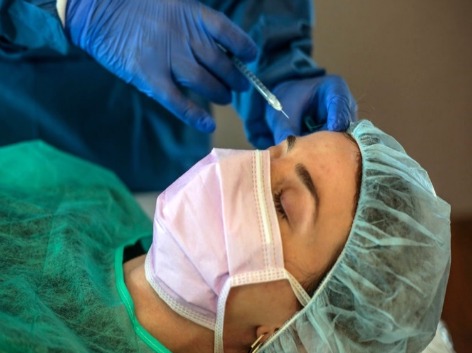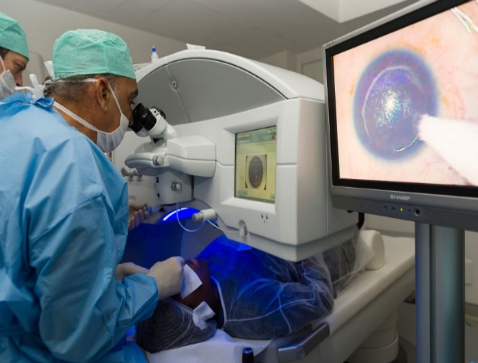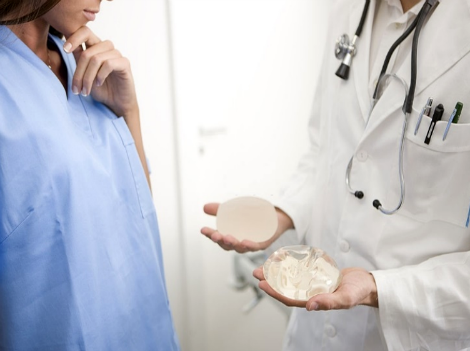How Technology is Changing the Plastic Surgery Industry
 Plastic surgery is a type of surgery done to change a person’s appearance and ability to function. The word plastic is from the Greek word plastikos meaning to mold or form. It is an ancient art that seems to date back to as early as 800 B.C where skin from the arm or legs was used as grafts for other parts of the body. This type was mainly for medical reasons to replace injured or scarred parts of the body.
Plastic surgery is a type of surgery done to change a person’s appearance and ability to function. The word plastic is from the Greek word plastikos meaning to mold or form. It is an ancient art that seems to date back to as early as 800 B.C where skin from the arm or legs was used as grafts for other parts of the body. This type was mainly for medical reasons to replace injured or scarred parts of the body.
These days, plastic surgery has evolved and is now more than for medical or reconstructive purposes alone. There are now cosmetic surgery procedures that are strictly for aesthetic purposes, that is to enhance a person’s appearance. You can learn about the history and types of plastic surgeries here.
Before now, most plastic surgery procedures were rudimentary and you will always see scars and may experience complications. Today however, because technology has continued to advance, some techniques help to deliver great results with fewer side effects. Greater knowledge of how blood circulates to the skin, tissues, muscles, and bones has made innovative techniques such as tissue expansion and flap surgery now available.
How Technology is Changing Plastic Surgery Procedures
Micro-surgeries
An important part of most plastic surgeries today is the recovery time and how scars are handled. Micro-surgeries have helped a great deal in reducing the time for recovery as minuscule devices are used to make tiny incisions that allow surgeons to get amazing results without much scarring. For instance, an endoscope, which is a thin tool with a camera, can be inserted into a tiny cut and this will show a video of any underlying issues. This video can be used to perform any changes needed. This is usually employed when working on eyebrow and jowl lifts.
These have made patients readily willing to invest in the procedures without the worry of getting infected or having to take out a long time for recovering.
Tissue Engineering
Tissue engineering is another way technology is revolutionizing the plastic surgery industry. A successful procedure was not always possible as new tissues may not take well to a person’s body, resulting in a need to start over again. Now technology has made possible the understanding of human tissues in a better way, such that even synthetic alternatives can be used.
Surgeons such as Dr. Kirman can carry out extensive tissue engineering because they now have a better understanding of the body’s cellular response to external stimuli. Transfer of tissue from one part of the body to another part is also possible.
Technologies like biomaterial and 3D printing have also been able to help with human cell growth and tissue printing. All these have helped to make the plastic surgery process more efficient.
Growth Factors in Healing of Wounds
Another way technology is helping in quick recovery is the use of growth factors. This stems from the observation that in chronic wounds, healing can be potentially accelerated instead of allowing it to progress in the traditional way.
In recent years, there have been therapeutic interventions to help speed up the way wounds heal. There has been a progress from basic surgical concepts to the realization that growth factors that are made from recombinant gene technology can help speed up healing. The healing process now does not need to go through the process of inflammation, proliferation, and remodeling. Rather, it can be a dynamic and overlapping chain of cellular processes that involves multiple types of cells, with growth factors controlling proliferation, cell migration, inflammation and ultimately promoting healing. There are many growth factors available but the one that is recognized and approved for clinical use by the FDA, for now, is recombinant human platelet-derived growth factor-BB (rhPDGF-BB).
Implant Materials
In plastic surgery, there has been an advancement in the use of alloplastic materials in altering soft tissues and bony appearance. Ideal materials to use must meet stringent conditions such that they are non-allergic, non-carcinogenic, and must not form a reaction to foreign bodies. Other criteria include that the material must be resistant to strain, must be sterilizable and must match the biomechanical characteristics of whatever tissue they are being used to replace.
It should be said though that no materials have fully satisfied all these criteria yet. However, current advancement in materials science has continuously improved the properties of implant materials. Although implants have been a part of plastic surgery for thousands of years, it was not until around the 1940s, when advanced technology allowed for the development of a variety of implantable materials, that it led to widespread use for both hard and soft tissue replacement.
For fixing bones, metal plates and screws have traditionally been used. Recognizing that they can be useful in the hand and facial skeleton, there are now mini plates and microplates that are designed to be used in these parts of the body making them useful in a broader sense. Metals such as titanium and vitallium have low bioreactivity, corrosivity, as well as no magnetic properties which makes them suitable for use as implants.
Computer-Assisted Imaging
Visualizing the potential results of surgery has now been made possible with the aid of computer-assisted imaging. Patients can now see how they are likely going to look after the surgery, whether that’s a face lift, fat transfer to buttocks, breast augmentation, or whatever procedure they are going for. Both the surgeon and their patient can agree and have the same understanding of the result before the start of the procedure as they can both see it right in front of them. This helps to calm the nerves of the patient and remove any form of worry. Computer-assisted imaging is great for reconstructive and high-end surgeries because it brings accuracy and efficiency.
Conclusion
Over the years, technology has considerably improved medicine, in this case plastic surgery, in many ways. From the introduction of different methods of performing incisions and surgeries to improved materials for implants and also the ways to fast and easy recovery, these advancements have been tremendous.
It is now possible to get to live life the way you want, fixing or correcting any part of your body without stress or having to worry about recovery time.
All of the above can be fully enjoyed when you find and work with a well-equipped facility with qualified professionals.

